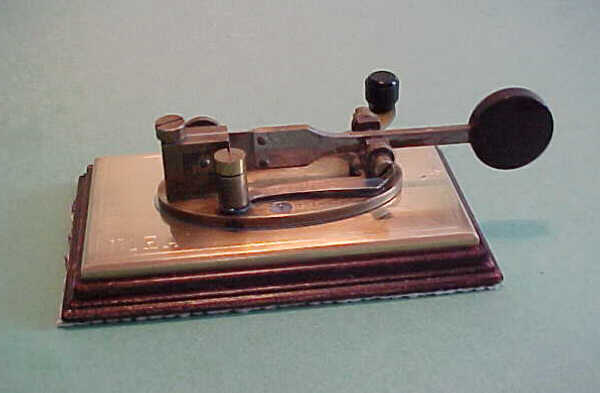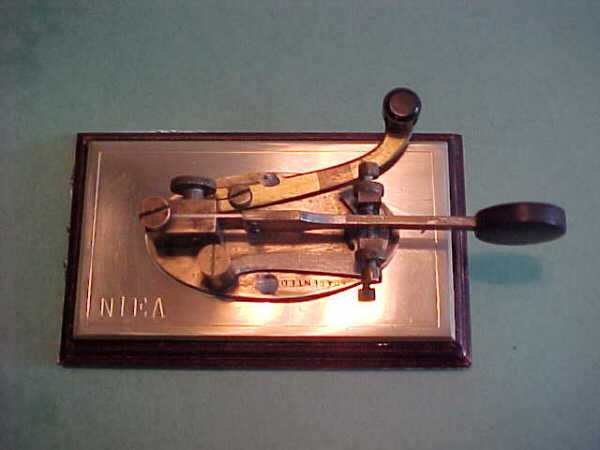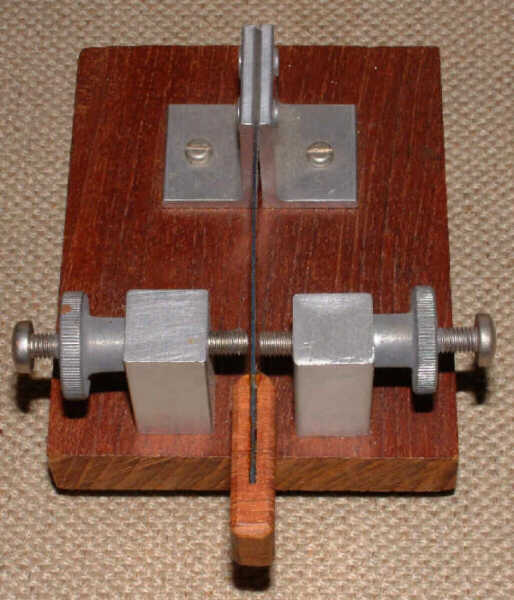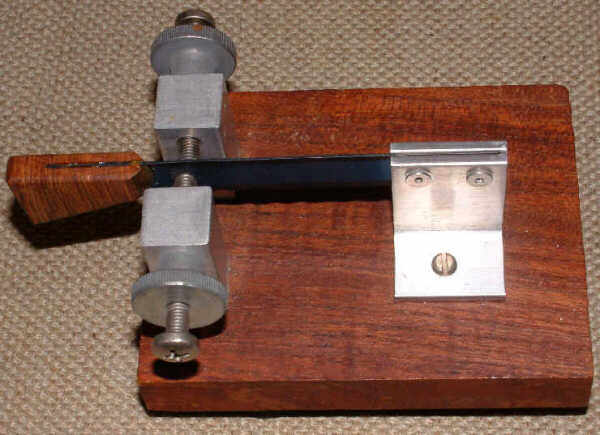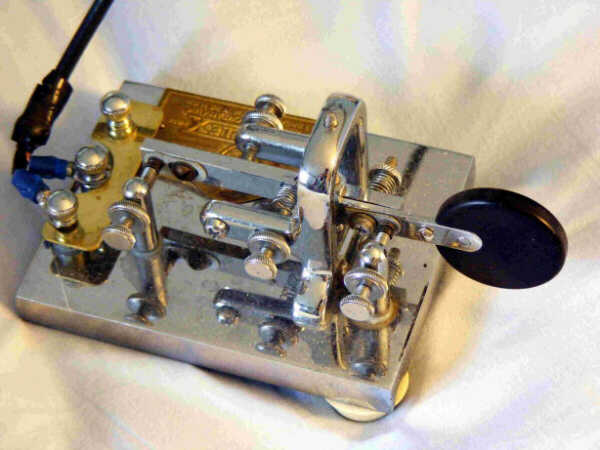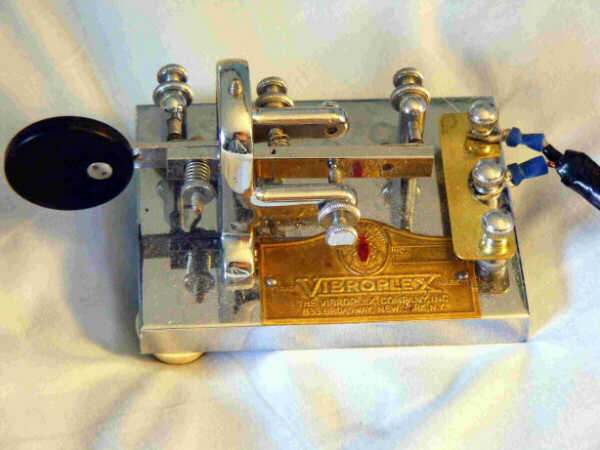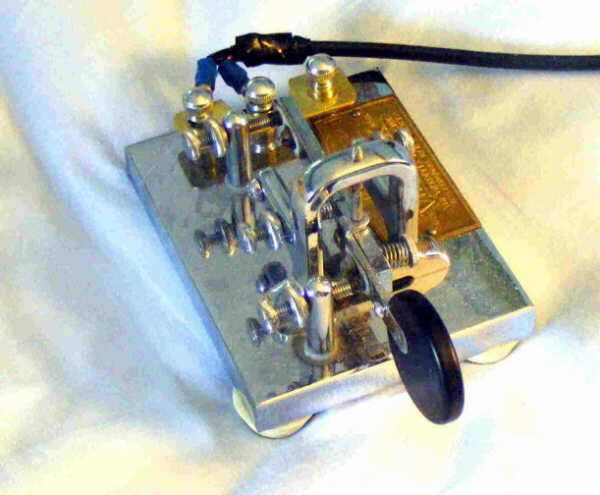N1EA's keys.
Bunnell Double Speed Key & Custom Base.
The Bunnell Double Speed Key, common ancestor of all sideswipers, was sold with a cast iron base with gold pin striping, but sadly these bases are scarcer than the key itself. Here is a custom brass base in a wooden sub base that I had custom made. The base makes it easier to send with because it steadies the key and elevates the knob... [N1EA].
Kungsimport SAG Radio Sideswiper.
This key was made in Sweden by Håkan Svärd (radio officer of SAG) and Ben Jockert, SM6CKU during the 1980s - advertised in "QST" and "World Radio". The secret to the excellent operating characteristics of the Kungsimport sideswiper is in the very lightweight small long trapezoid shaped finger piece. The finger piece slopes slightly upwards on the top - but just a small amount because it isn't really needed there, and also slopes downward a bit more. The wood is as lightweight and small as can possibly be. Even the same size in plastic doesn't work - too much weight means the key chatters and doesn't return to center quickly. The key has an excellent feel, so far this is tied with the Vibroplex Modified Vibrokeyer as my favorite sideswiper. [N1EA].
Modified Vibroplex VibroKeyer.
The Vibroplex VibroKeyer was one of the first manipulators or paddles for the electronic Morse keyers. These keys were made first in Brooklyn, NY, then in Portland, ME and currently in Mobile, AL. This is the classic Vibroplex Semi-Automatic key made into a double-throw-single-pole switch. It came with the traditional paddle and button shaped finger pieces. These were removed and a round button shaped finger piece was fabricated with a channel cut so that the button would be flush with the lever. A special fastener was used so that the button was truly flush. Because this key has individual adjustments for not only spacing of the throw of the lever, but also for individual left and right spring tension, this is a much better sending key than the others. The hard rubber feet were replaced with soft white rubber cushioned feet that hold the key firmly so that it doesn't slide. [N1EA].
